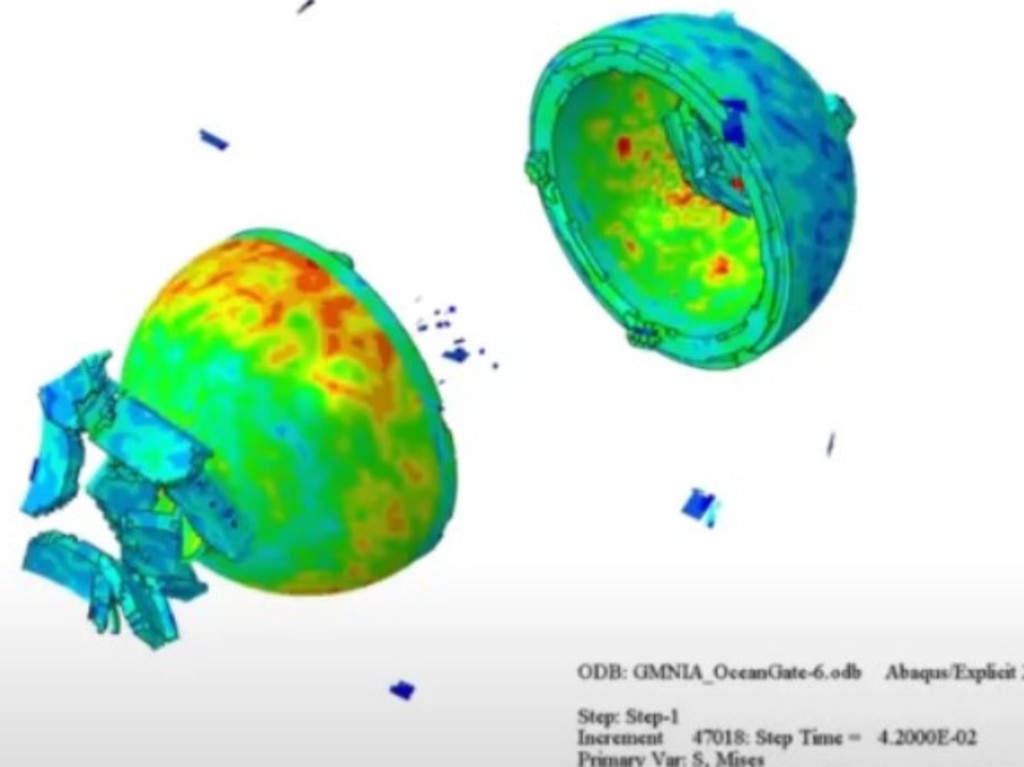Simulation reveals how the Titan submersible imploded
A new simulation claims to have exposed the final moments of the doomed Titan, with a detailed timeline revealing a heartbreaking detail.
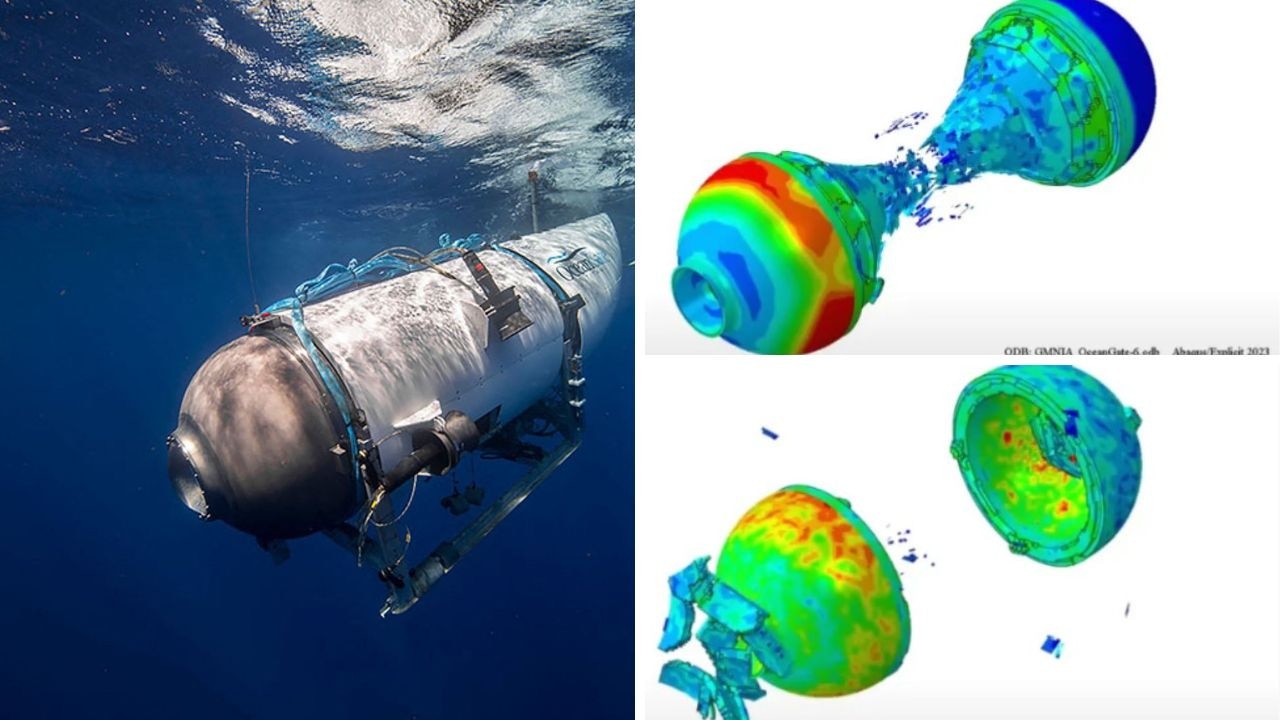
Ever since the Titan submersible imploded, many theories have emerged about what exactly happened to the doomed craft.
The horrific incident killed all five people who were on-board the OceanGate submersible when it met its demise during a voyage to the Titanic shipwreck on June 18.
Since then, submarine expert José Luis Martín has claimed the passengers would have been aware of their fate for up to 71 seconds, with the change in pressure leading to the submersible freefalling before “the implosion and instantaneous sudden death”.
Other animations online show how the vessel could have imploded, including this video which has been watched millions of times worldwide by AiTelly detailing a theory about pressure destroying the craft, causing it to implode.
“There is around 5600 pounds per square inch of pressure (at the bottom of the Atlantic Ocean). That’s almost 400 times the pressure we experience on the surface,” the video stated.
Such force caused the OceanGate sub to crumple “within a fraction of a millisecond”.
The craft’s carbon fibre construction was also blamed.
However, a chilling new simulation claims to expose the final moments of the Titan submersible in millisecond intervals.
Dr Ronald Wagner, who has a PhD Engineering at the Technical University Braunschweig in Germany is an expert in the buckling of thin-walled shell structures and has analysed the implosion and fracturing of the Titan submersible in astounding detail.
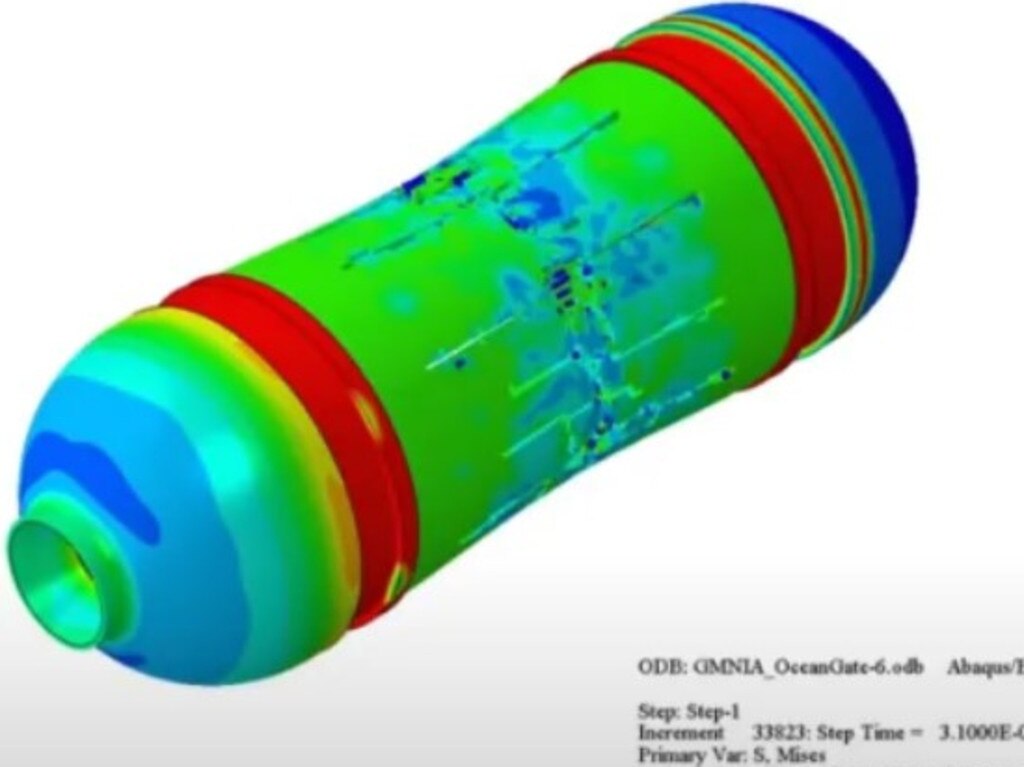
Dr Wagner has revealed what it would have looked like, using frame-by-frame clips in software. They reveal the heartbreaking reality of what happened to the submersible, and the speed of which it could have all been over.
He analysed three modes of failure – the viewport, the adhesive seal between the titanium endcaps and the collapse of the cylindrical hull.
He has also explained how the carbon fibre may have shattered, Engineering.com reported.
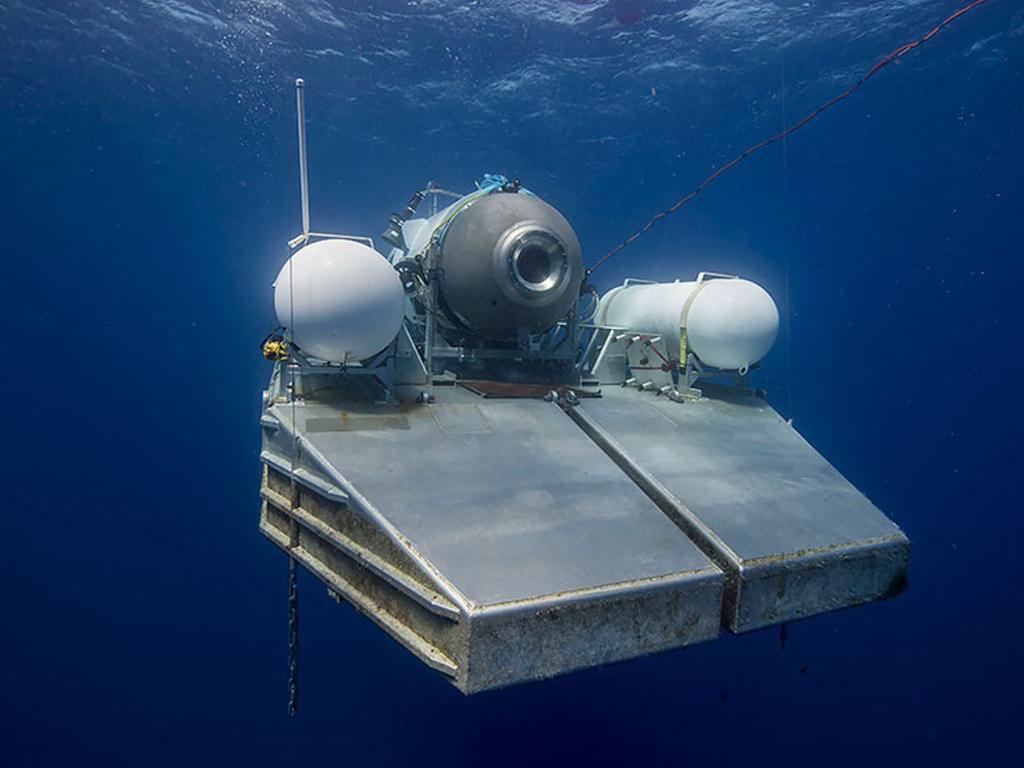
Dr Wagner believes those on-board the Titan would not have been aware of all that was happening as it takes 13 milliseconds for the brain to process information from the eye, 100 milliseconds to feel pain, and 13 milliseconds into the Titan’s implosion there was nothing intact of cylindrical section where they would have been sitting.
“They would have been dead 10 milliseconds ago,” Dr Wagner said.
“They wouldn’t really feel anything or see anything coming. They would just be instantly dead.”
Here’s what Dr Wagner theorises happened on-board the vessel:
• 0 milliseconds: This is when the Titan’s carbon fibre hull first starts to collapse inward, however otherwise the craft is mostly intact.
• 33 milliseconds: The centre of the craft has now collapsed to about half its diameter.
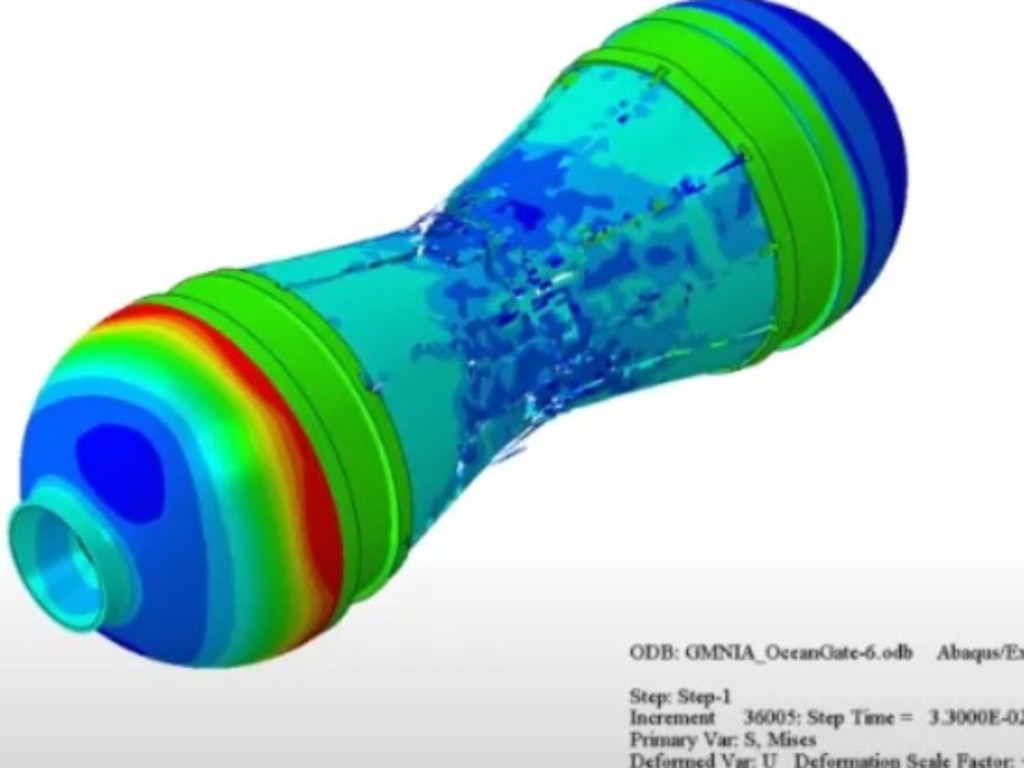
• 34 milliseconds: The craft is squashed enough to crush anyone seated in the middle. Also, the hull appears to be breaking up and bending, with fragments from above from compression failure. Carbon fibre in composites fails first in compression before it fails in tension. So the fibres on the outside would have crumpled first, while the fibres on the inside of the vessel would be stretched
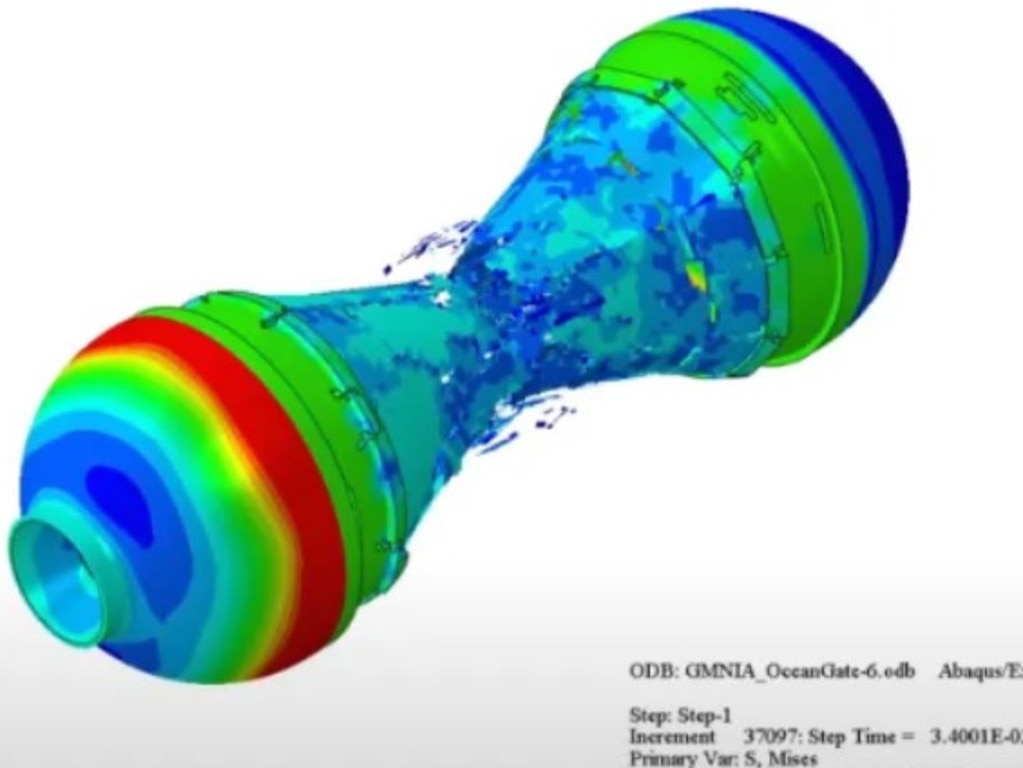
• 35 milliseconds: The centre of the Titan gives way. This failure of materials happens before the diameter reaches zero and thus disproves the theory that massive external pressure would have fused the hull into one piece.
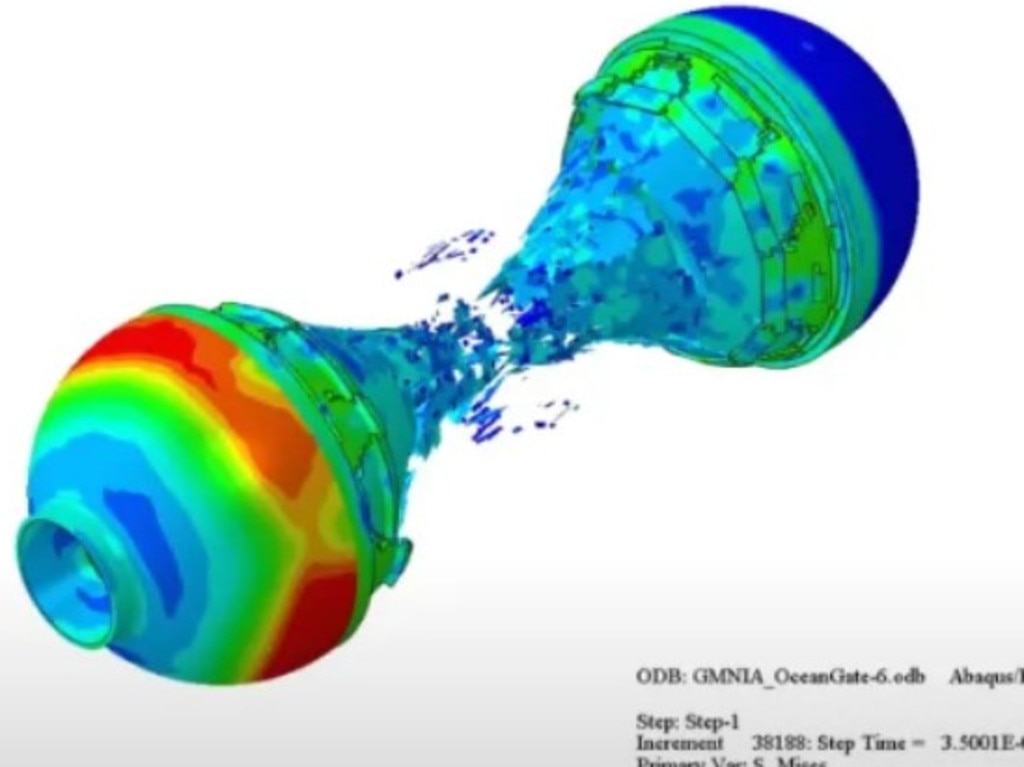
• 38 milliseconds: Pieces of the titanium ring and hull would have been thrust into the endcaps, leaving little hope of finding human remains preserved by the integrity of the endcaps.
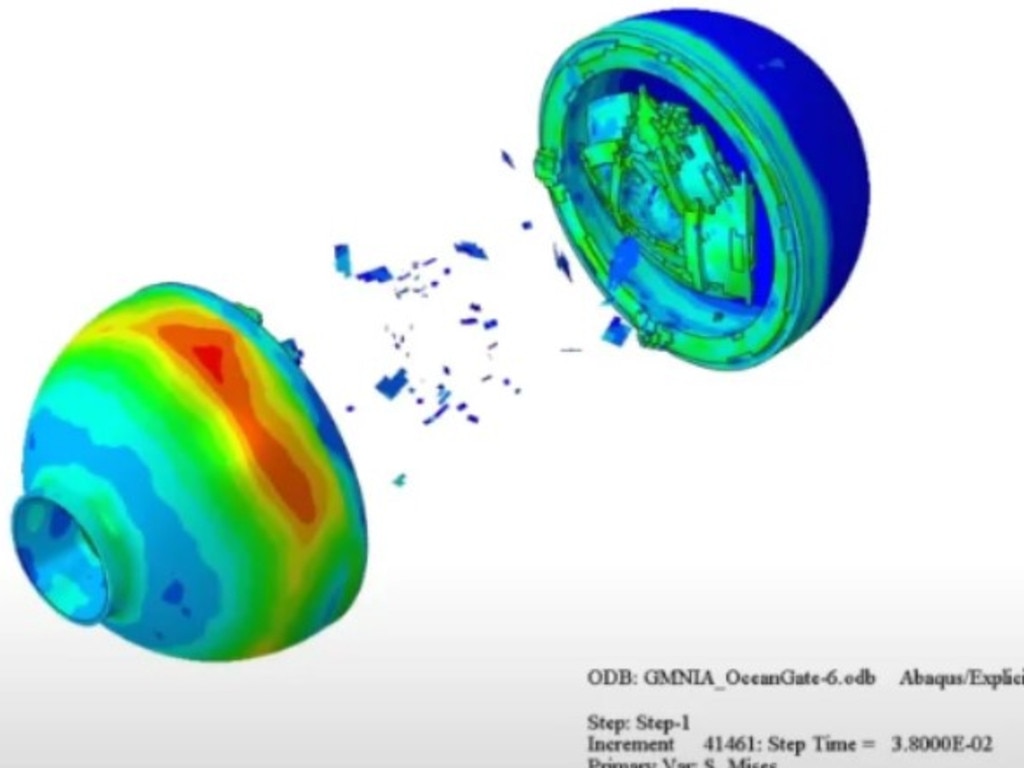
• 42 milliseconds: Debris is scattered around the area, and the hemispherical shells are closer together.
